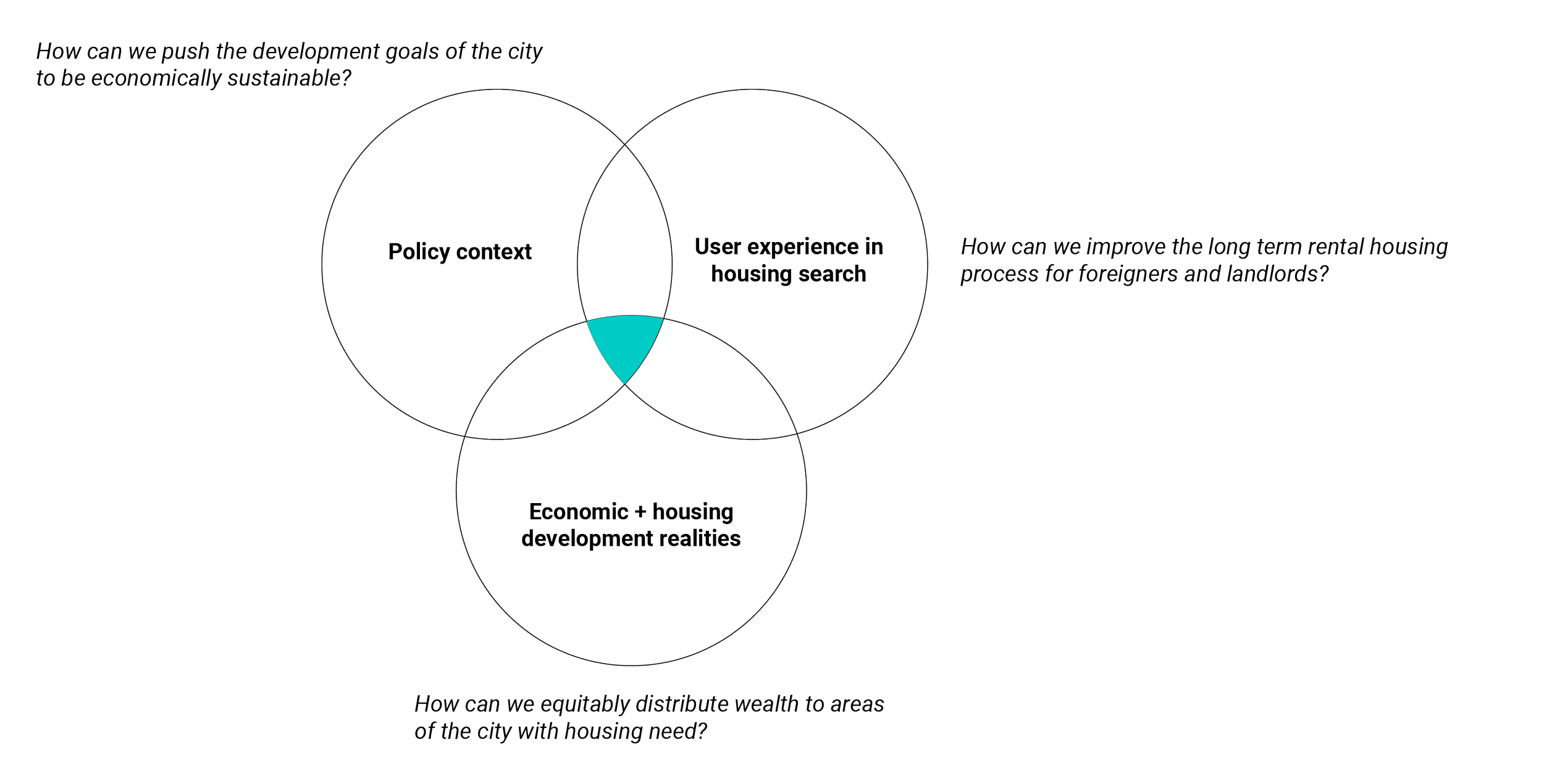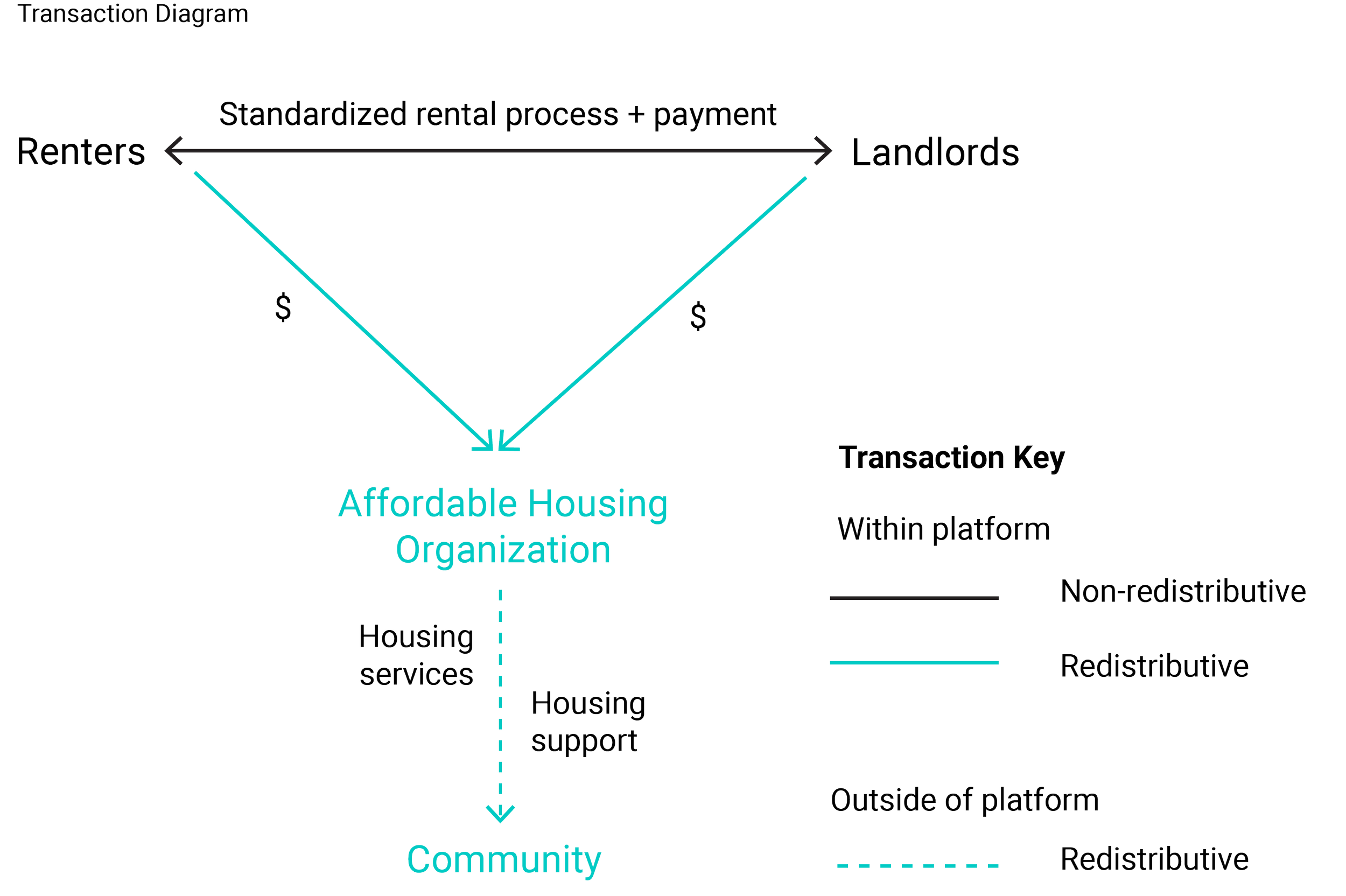Enlace: A rental platform that repairs
My Role: Co-founder, Lead Designer
Methods: Data review, social media analysis, housing policy analysis, user and expert interviews, rapid prototyping
Collaborator: Alejandra Fernández
Duration: 15 weeks
problem
Facet 1 (economic + political): Accelerated by the pandemic, there has been an influx of wealth in certain neighborhoods in Mexico City from the arrival of middle class foreigners from the Global North. This has led to a rise in housing prices in those neighborhoods. The city hopes for the wealth brought by foreigners to benefit the city as a whole, but does not have a plan in place to do so.
Facet 2 (economic + political): The capacity of the city government to address affordable housing needs in the city is limited.
Facet 3 (user experience): It is difficult for foreigners to find long-term housing in Mexico City. They generally lack trust in the rental process and landlords because of the plethora of listing platforms, the extensive requirements for renting, and the non-standardized methods of payment.
Facet 4 (user experience): Landlords, due to existing policy and prior experience, do not trust renters and therefore ask for extensive documentation and interviews before approving a tenant.
In addressing these multiple facets, Enlace makes long term renting easier and safer for foreigners and landlords, and–through a socially oriented business model–channels profits to NGOs working on affordable housing in the city.
questions
How can we leverage technology to funnel wealth from rentals for foreigners directly into affordable housing projects?
How can we make long term renting easier and safer for foreigners and landlords in Mexico City?
problem context
City goal: Become a creative capital of the world by attracting talent from abroad, especially remote workers, with the goal of increasing economic development in the city
Current reality: There is no plan in place to disperse the economic benefits brought by digital nomads throughout the city. It stays concentrated in the neighborhoods where the majority of foreigners live. For this project, the focus is on the neighborhoods of Roma and Condesa.
Migration realities: There has been an increase in the arrival of the creative class from the Global North into Mexico City.
2019-2022: 85% increase in US temporary residency visas in Mexico
Housing realities:
City has decreased investment in affordable housing
Between 2013-2014: 42% decrease in new and intervened affordable homes
The increasing presence of foreigners in Roma and Condesa contributes to the rising housing prices in both areas
2019-2022: 30% increase Airbnb stays over 30 days, average is 92 days
Design and Research Process
Enlace aims to improve the housing process for renters and landlords, while also creating an alternative economic model for long term rental housing for foreigners, which redistributes wealth to housing NGOs. Given the multifaceted nature of the problem, the research process included user interviews with foreigners, landlords, and NGOs, analysis of social media, as well as a review of gentrification theory, data, and histories and realities of development in Mexico City.
research
Research: Personas
Research: Rental process
ideate
Given the housing context in Mexico City as well as the difficulties faced by foreign renters and landlords, Enlace aims to address user pain points while also redistributing wealth to areas of the city with housing needs
Making the rental process easier
Standardized documentation requirements
Standardized payment method
Verification system for landlords and tenants
Redistributing wealth
Housing NGOs: Through partnering with housing organizations, Enlace channels resources to areas of the city with housing need.
Sister Neighborhood: Renters and landlords are paired with “sister neighborhoods” to which they contribute through the use of the platform. They are able to see their contributions to the sister neighborhoods via updates from the NGOs working there.
Ideate: User flows



Ideate: Methods for redistribution of wealth
prototype
Prototype: Wireframes
design
Design: High fidelity
Design Feature: Sister neighborhood
The sister neighborhood allows the renter and landlord to feel connected to other parts of the city and understand how using Enlace helps alleviate housing need in Mexico City.
DESIGN: VIDEOS
Video 1: Foreign Renter
Meet Anika. A 28 year old graphic designer from Georgia who loves to travel. Her job is now remote and she’s excited to move to Mexico City, which she is hoping to make her new home.
She has heard about expat effects on rising housing prices, so she is searching for ways to rent that minimize harm.
She is looking for an apartment to stay in for the next few years. As she hunts, she’s confused by the extensive documentation and cash payments required to rent.
Video 2: Landlord
Carla is Anika’s landlord
3 years ago Carla moved back to Mexico City, which they love. They grew up outside of the center and upon returning, they were surprised by how much the cost of living had risen.
They don’t want to contribute to the increasing inaccessibility of housing in the city, but also need to rent out their grandmother’s apartment. Carla just completed a one year process to evict a tenant who missed 5 months of rent. They are desperate to find a trustworthy renter.
Video 3: Housing NGO
Part of Anika and Carla’s monthly fee goes to Habitat for humanity, an Enlace partner NGO that works in Xochimilco.
The Mexico chapter of Habitat needs more donations to finish their work rebuilding housing in Xochimilco after the 2017 earthquake. Enlace sets up a partnership with them.
learnings
Role of technology in redistribution
In an economy centered on redistribution, designers of sharing economy technologies would:
Develop technologies that are situated within the larger economic, cultural, political and physical systems of the city.
Leverage the technology and the talent and assets it gathers to repair divisions in the city created by unequal access to resources.
Use the technology to connect and serve stakeholders beyond those who channel capital into the platform.
Create networks of support that span the city through using the platform to share resources among paying and no paying users of the technology.
Make visible for users of the technology their connections to redistributive networks that span the city.
A right to profit from the city means the obligation to repair it.
















